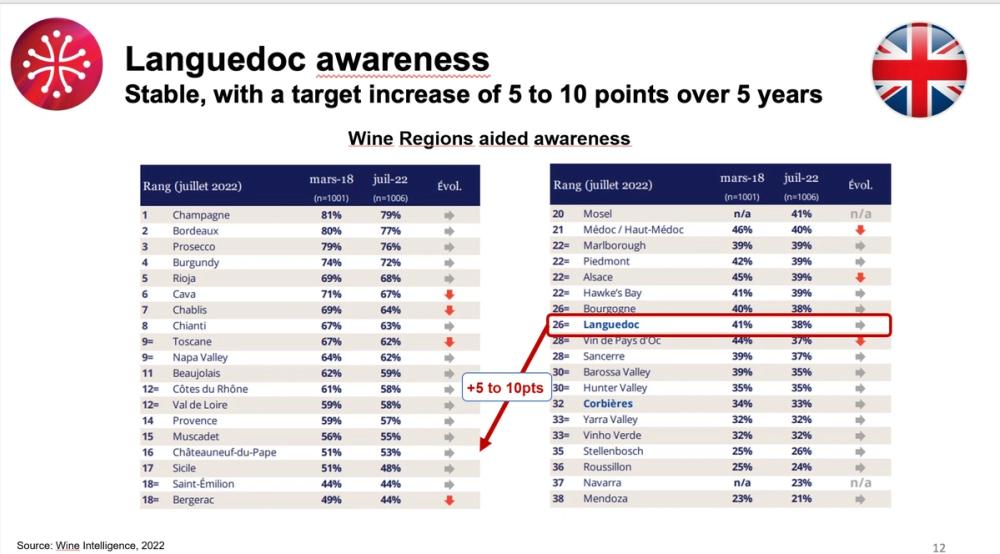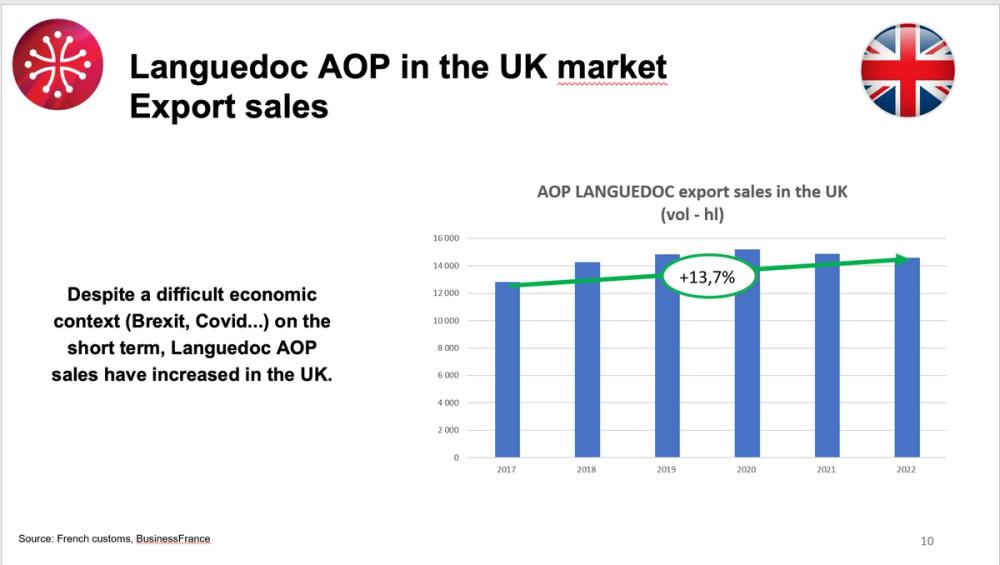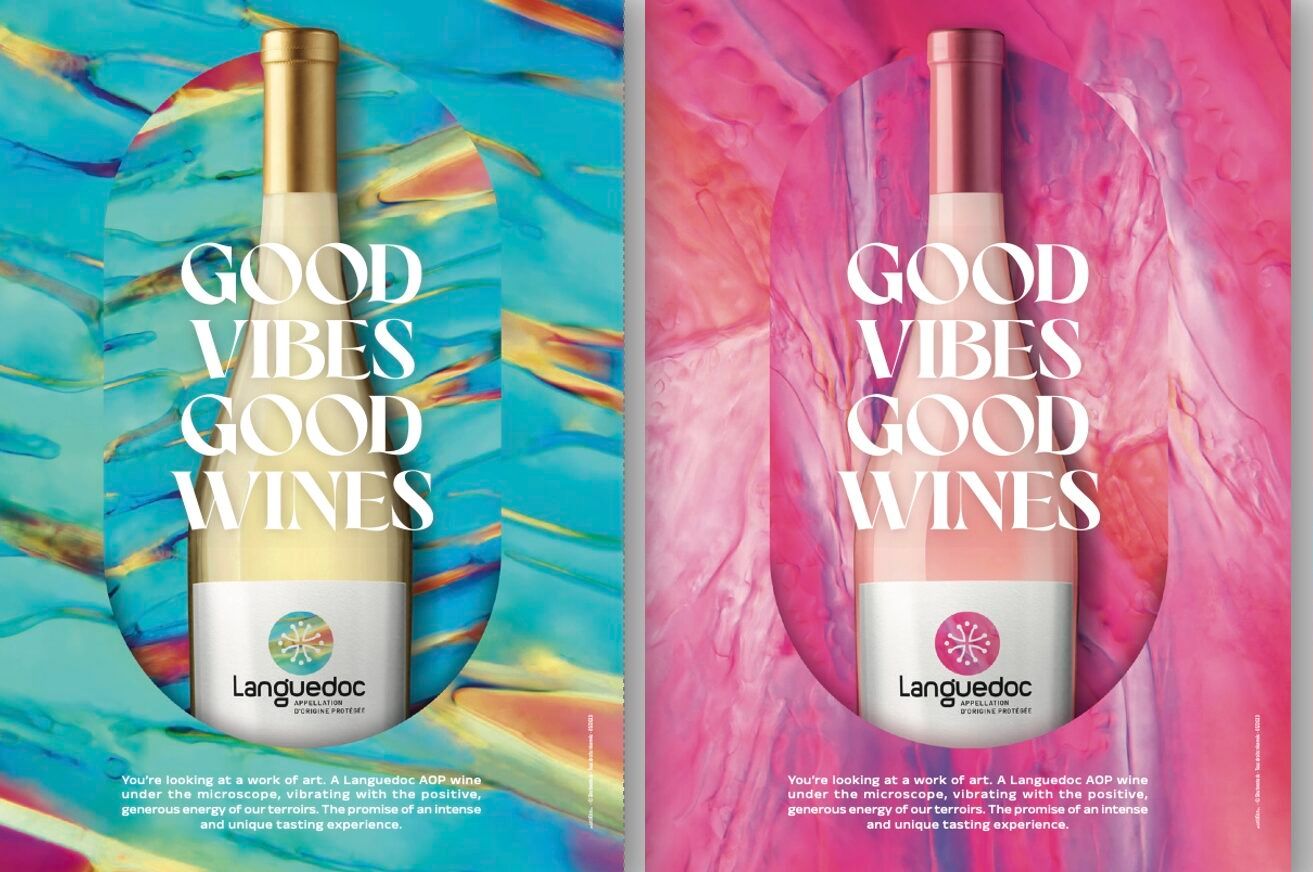The AOP Languedoc new consumer campaign hopes to push the region into the top 20 most well known wine areas in the world with a promotion that looks to make an emotional connection with current and potential future wine drinkers.
The majority of generic wine campaigns follow a familiar pattern with a heavy focus on the region’s climate, land, soils, and all important terroir that all come together to make the wines it hopes the world will enjoy. It has worked time and time again and there is nothing wrong with that.
But when faced with creating the first major consumer and trade campaign for the AOP Languedoc, Olivier Legrand, director general of marketing, wanted to take a very different route. One that brings to life the nature, the smells and sounds that are so much the beating heart of what the Languedoc is. A campaign that highlights what Legrand describes as “the vibrations” of the region – encapsulated in the strapline: “Good Vibes. Good Wines.”
“We wanted to create a new identity that was a true reflection of the region,” he explains.

The new campaign looks to bring to life the spirit and sensory experience of making wine in the Languedoc
He says he has been particularly pleased by the strong positive response the campaign has had from the region’s older, more traditional producers – potentially the hardest stakeholders to please – who have tapped into how relevant the campaign is to the way they make their wine. Where their focus is not 100% on terroir, but also the culture, nature, sounds and spirit of the the region.
“It’s a campaign that is all about what they do,” he stresses.
A campaign that looks to capture the all round sensory experience of making wine in the AOP Languedoc. It’s why, he adds, the key goal of the campaign was to make an emotional connection with wine drinkers that will hopefully make them come back to discover more of its wines.
“We wanted a campaign that would make them more loyal to the Languedoc so they would come back for more?” he says.
Increased awareness

AOP Languedoc wants to break into the top 20 most recognised wine regions in the world
It’s why it has set itself the target of being in the consumer’s top 20 most recognised wine producing regions in the world – up from its current position of 26 and an awareness ranking, calculated by Wine Intelligence, of 38% – within the next five years. This compares to the top ranking region – Champagne – with 78% awareness. But then its ranking sits higher than other more traditional and long standing regions, like Mendoza in Argentina (38th position) and Stellenbosch in South Africa (35th), considering it was only founded 15 years ago.
To help bring that sensory experience to life the campaign uses a combination of vibrant, bright colours with posters showing the colours that come out when you look at white, rosé and red AOP Languedoc wines through a microscope. Wines that are “vibrating with our passion” to make great quality wines, says Legrand.
‘The Good Vibes. Good Wines’ campaign will be rolled out across the trade in October and then out to consumers with a mixture of targeted, above the line campaigns in the coming months, including a link up with key restaurants that have good links to the Languedoc. It also has plans to roll the campaign out to other key international markets, including North America, in 2023 and across 2024 where it will be making a big splash at both Wine Paris & Vinexpo Paris and ProWein.
Legrand says the theme of the campaign would be ideal for potential immersive tastings and events in the future and he is keen to look at events and opportunities where they can play on the emotional and sensory experience of enjoying wine. “We want to create smaller, focused, authentic events,” he says.
Time to push

AOP Languedoc has enjoyed strong success in the UK over recent years despite Brexit and Covid
It is certainly seems a good time for AOP Languedoc to be investing in spreading the word about what the region – now the number one appellation in the overall Languedoc – can offer.
Its 10,000 hectares of vineyards helped produce 250,000hl in 2022 with over half of its wine now made up of rosé (55%), followed by red (35%) and white (10%). Which in itself is a marked shift from the situation 10 years ago where the majority of its production was for red wines.
That switch has helped see its exports grow, with 17 million bottles of AOP Languedoc exportedin 2022 (up 120% on 2005), worth €55 million (up 150% on 2005). Exports now account for 45% of sales compared with 39% for all Languedoc appellations. In the last 10 years overall sales have risen by 75% by volume and 150% by value.
Its biggest markets outside France are now the US (23%), followed by China (17%), UK(13%), andBelgium (12% – Source French Customs. Business France). Its exports have been driven by the increased demand in rosé which now makes up 70% of its exports and have increased in volume by 160% in the last 10 years.
Its UK performance – up nearly 14% in sales between 2017 and 2022 – is particularly strong considering it has faced Brexit, Covid-19 and a cost of living crisis. Languedoc’s share of the French AOP wine market is now 6.5% compared to 5% in 2021 and AOP Languedoc has seen its UK supermarket sales increase by 6.6% in the last three years.
AOP Languedoc is made up of four departments Hérault, Gard, Aude and Pyrenées Orientales and stretches from Collioure, near the Spanish border, to Nîmes. Up to 30% of its growers are committed to agro-environmental actions and labels of which 15% are organic.
- To find out more about AOP Languedoc go to its website here.
































